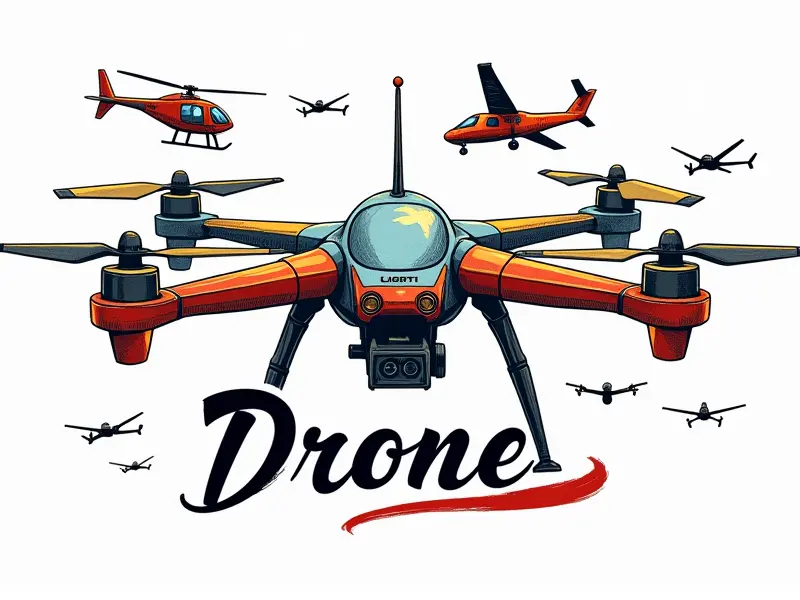Can I fly a FPV drone at night?

Can You Fly FPV Drones at Night Legally?
Flying an FPV (First-Person View) drone at night raises several questions regarding legality and safety. The Federal Aviation Administration (FAA) has specific regulations for operating drones during nighttime hours, which vary based on the type of drone and its intended use.
Legalities of Night FPV Drone Flight
The FAA requires that all drone operators adhere to certain rules when flying at night. These rules are designed to ensure public safety and prevent accidents involving manned aircraft. To fly an FPV drone legally after dark, you must:
- Obtain a Remote Pilot Certificate with a Small UAS Rating
- Familiarize yourself with the FAA's Part 107 regulations for nighttime operations
- Ensure your drone is equipped with anti-collision lighting visible from all directions
- Avoid flying in controlled airspace without prior authorization
Tips for Safe Night FPV Drone Flights
Flying an FPV drone at night presents unique challenges. Here are some tips to ensure a safe and enjoyable experience:
- Use High-Quality Cameras: Opt for cameras with low-light capabilities to capture clear footage.
- Invest in Night Vision Goggles (NVGs): These devices enhance your ability to see obstacles and hazards during nighttime flights.
- Plan Your Route Carefully: Use GPS waypoints to navigate safely through unfamiliar areas.
- Check Weather Conditions: Avoid flying in conditions that could impair visibility or cause mechanical issues.
Nighttime FPV Drone Regulations Explained
The FAA's regulations for nighttime drone operations are outlined in Part 107 of the Federal Aviation Regulations. Key points include:
- Anti-Collision Lighting: Drones must be equipped with red and green anti-collision lights visible from at least three miles away.
- Visual Line-of-Sight (VLOS): The drone operator must maintain visual contact with the aircraft throughout the flight.
- No-Fly Zones: Avoid flying over densely populated areas, near airports, or within restricted airspace without proper clearance.
The Risks of Night FPV Drone Operations
Flying an FPV drone at night comes with inherent risks. These include:
- Reduced Visibility: Decreased visibility increases the likelihood of collisions with obstacles or other aircraft.
- Navigational Challenges: Navigating unfamiliar terrain in low-light conditions can be difficult and dangerous.
- Mechanical Issues: Cold temperatures at night may affect battery life and electronic components, leading to unexpected failures.
How to Navigate Night FPV Drone Laws
To comply with FAA regulations for nighttime drone operations, follow these steps:
- Obtain a Remote Pilot Certificate: This certificate is required to operate any unmanned aircraft system (UAS).
- Study Part 107 Regulations: Familiarize yourself with the specific rules governing nighttime operations.
- Equip Your Drone Properly: Install anti-collision lighting and ensure all necessary safety features are operational.
Challenges of Night FPV Drone Flying
Nighttime flying presents unique challenges that must be addressed to maintain safety and compliance. These include:
- Environmental Factors: Cold temperatures, humidity, and wind can affect drone performance.
- Social Disturbances: Neighbors or local authorities may report unauthorized nighttime flights.
- Traffic Management: Avoid flying near manned aircraft to prevent potential collisions.
Best Practices for Night FPV Drone Flights
To ensure a safe and legal nighttime flight, consider the following best practices:
- Conduct Pre-Flight Inspections: Check all equipment thoroughly before takeoff.
- Use GPS Waypoints: Program your drone with pre-defined routes to avoid getting lost.
- Stay Informed About Weather Conditions: Avoid flying in adverse weather that could impair visibility or cause mechanical issues.
Legal and Safety Considerations for Night FPV Drives
Flying an FPV drone at night involves both legal and safety considerations. It is crucial to understand the regulations and take necessary precautions:
- Compliance with FAA Regulations: Adhere strictly to all rules outlined in Part 107.
- Safety First: Prioritize your own well-being and that of others by avoiding risky maneuvers or locations.
Is Night FPV Drone Flying Safe?
Flying an FPV drone at night can be safe if you follow all regulations, use appropriate equipment, and take necessary precautions. However, the inherent risks associated with reduced visibility and environmental factors must not be underestimated.
Can You Fly FPV Drones After Dark?
You can fly FPV drones after dark, but only if you comply with FAA regulations, obtain proper certification, and ensure your drone is equipped for nighttime operations. By adhering to these guidelines, you can enjoy the thrill of night flying while maintaining safety and legality.

